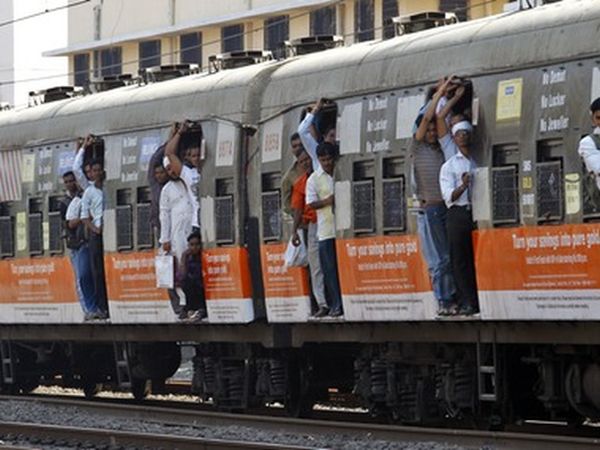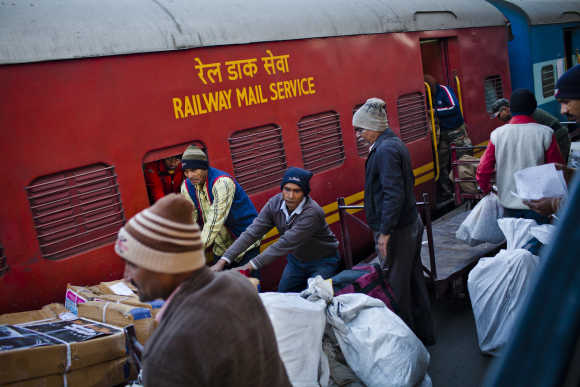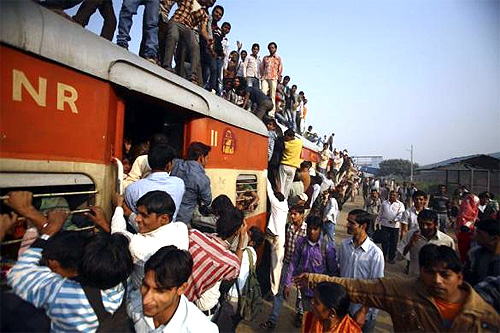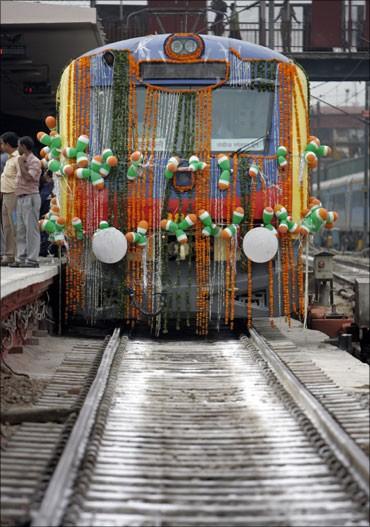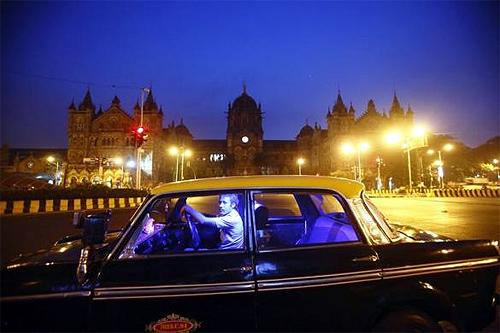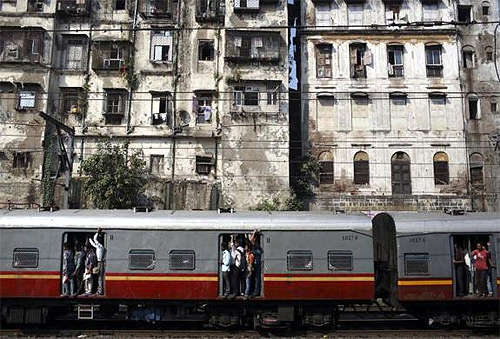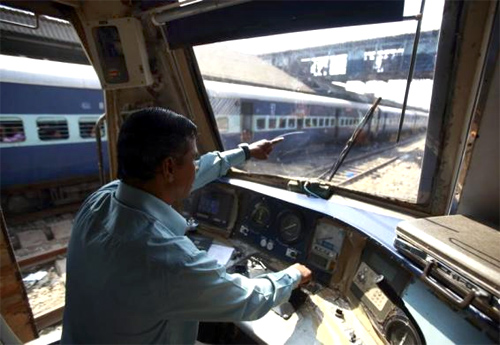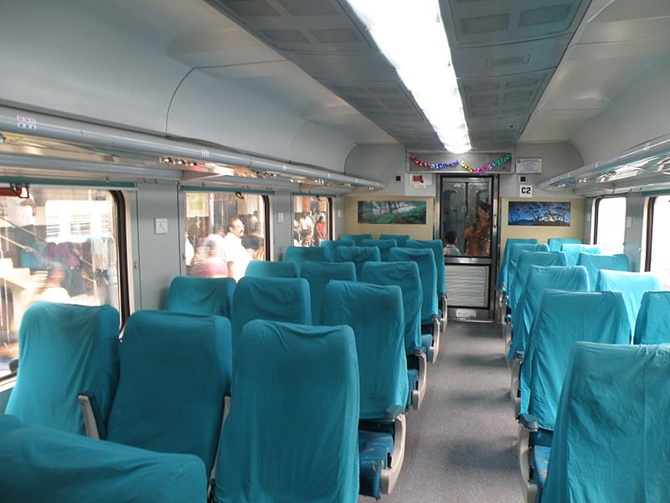 | « Back to article | Print this article |
How the fare hike can revive Railways
Passengers expect better services after the railway minister hiked fares.
The new railway minister, D V Sadananda Gowda, has begun well.
He has announced a sharp increase in passenger fares and a more moderate one for freight.
Without this, Indian Railways' already precarious finances would have gone even more off-track - indeed, might have become irretrievable.
Click NEXT to read more...
How the fare hike can revive Railways
This move will hopefully further the process of ending cross-subsidisation of passenger fares with freight rates.
At the same time, the follow-up reforms must be thorough. However, even as one welcomes the priorities that underline the move, it is necessary to sound a note of caution.
Freight charges should remain competitive with rates in the road transport sector, to which the Railways has lost market share over the decades.
So the follow-up reform must be aimed at bringing about institutional efficiency.
Click NEXT to read more...
How the fare hike can revive Railways
The organisation will have to stop operating on a cost-plus basis, and start competing in the marketplace.
On the passenger revenue front, the challenges are no less daunting. Passenger revenue fell short of what was budgeted, by 11 per cent, in the last financial year.
In the current year, however, it is projected to increase by a hefty 20 per cent.
Click NEXT to read more...
How the fare hike can revive Railways
Along with the fare increase, therefore, Indian Railways must pay greater attention to improving passenger amenities and safety; there have been too many high-fatality accidents lately, including horrendous fires on running passenger trains.
Thereafter, the resources mobilised through the rate hikes should be used prudently - towards much-needed modernisation and infrastructure upgrades of regular services.
Click NEXT to read more...
How the fare hike can revive Railways
This means two things. One, vast boondoggles, such as high-speed trains, should not come before basic infrastructure upgrades.
Two, staff costs should not be allowed to get even more out of hand - for instance, efforts to reduce the number of employees must be restarted.
Also, since the railway minister used the United Progressive Alliance's (UPA's) decision to raise passenger fares and freight rates during the election cycle as an excuse, he should take another leaf out of the UPA's book and give the proposed rail tariff authority real powers to fix passenger fares and freight rates.
Click NEXT to read more...
How the fare hike can revive Railways
This will depoliticise the exercise once and for all.
There is another way in which the National Democratic Alliance government can take forward the good work it has started.
By going in for crucial and substantial resource mobilisation just before the presentation of the Railway Budget, the government may be accused of having devalued the budgetary exercise.
Click NEXT to read more...
How the fare hike can revive Railways
This, however, should be no cause for concern. The new government might as well bury the institution of the Railway Budget.
It has become an exercise in grandstanding, a chance for the minister to outline on national television a long list of new passenger trains and railway lines - invariably followed by a ruckus created by members of Parliament who quickly determine, frequently incorrectly, that their state or region has been left out.
Click NEXT to read more...
How the fare hike can revive Railways
The Railways Budget papers can simply be tabled in the Lok Sabha and released on official websites.
Ideally, Indian Railways should be run as a corporation and its accounts prepared on a commercial (accrual) basis.
It can then become a wholly government-owned public sector enterprise and not a departmental undertaking.
Indian Railways has long been working at preparing its accounts in a commercial format; Mr Gowda must get the organisation to complete that task.
